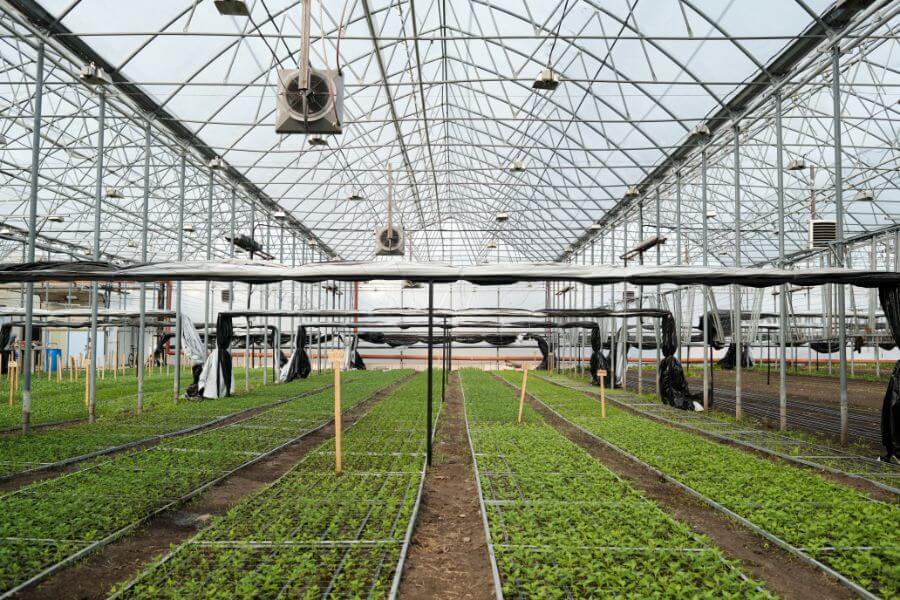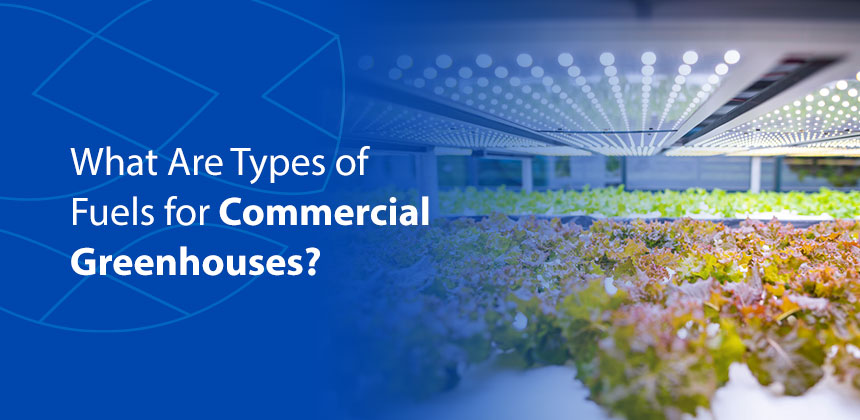

Greenhouse heating is essential to maintain the quality of your crops and prevent freezing. Frozen plants and unnecessary downtime can reduce productivity and result in lost revenue. Finding a heating system that works so you can keep your greenhouse warm through the harshest winters is beneficial.
Below, you’ll learn more about the different fuel types you can use to heat a greenhouse. You’ll also learn about other supplemental fuel options to add additional heating power during particularly cold winter nights.
When you’re heating a greenhouse, you have various options. The right choice depends on your needs, price, availability, and convenience. Below, we’ll go over some standard fueling options among growers.
Propane gas is a clean fuel that can help you efficiently power your greenhouse heaters. LPG is made by stripping natural gas or as a byproduct of oil refinery operations. At normal temperatures, it can be liquified using moderate pressure.
Propane is more accessible in areas where natural gas isn’t readily available. Using propane gas heaters entails little maintenance, but you’ll have to use a fuel storage tank to store your propane. You’ll also need a preheater.
You can purchase propane during the off-season, usually the summer, to potentially get the lowest price, helping you save money.
Natural gas is often one of the most affordable fuels due to improved production methods. However, it’s not always available to growers in certain areas. Natural gas is delivered through transmission lines, meaning you don’t have to invest in a storage tank. Like propane, natural gas is a clean fueling option and requires minimal equipment maintenance. You can choose a supplier who can help you purchase at opportune times.
When it comes to fuel oils, you have a few options:
To potentially get the best price, you can purchase fuel oils when demand is low, usually in the summer or early fall.
Aside from the standard fuel options we’ve mentioned above, you also have alternative heating sources to supplement your system, whether using propane, natural gas, or fuel oils. These alternative heating sources are best utilized as a supplement to your system rather than a complete heating system. Learn more about the different supplemental heating sources below:
Wood is an easily accessible fuel source in areas where it’s in abundance, and it can cost you much less than some of these other alternatives, especially as forest residue, sawdust, chips, or mill waste.
You can burn this alternative heating source in a furnace or boiler designed for burning wood. The exact heat value from the wood will depend on how much moisture is present in the material. Dry wood usually has a higher heat value since it can burn better than moist material. The type of wood can also determine heat value — dense hardwoods take longer to burn, giving them a higher heat value, while softwoods burn more quickly.
Coal is another supplemental heating source, and it’s more accessible if you live close to coal mines. The further you live from the mines, the more you’ll have to pay to cover the cost of transportation.
Coal heating systems often require more labor to operate than fuel or other heating sources, mainly because coal has higher ignition temperatures than other alternatives like wood. Coal also burns down to ashes, which have to be thrown out, and the coal has to be covered in a storage area to prevent it from freezing.
The Earth’s soil usually maintains a uniform temperature between 5 to 6 feet below the surface. The same can be said about some wells or ponds in some parts of the United States. In some locations, you can even find steam or warm water deep in wells.
You can potentially capture this heat directly as steam or use heat pumps to help warm your greenhouse. These pumps take the Earth’s natural warmth and move it to the greenhouse. One thing to keep in mind is that installing a geothermal heating system can often be a larger upfront investment than other forms of heating.
Waste oil is a byproduct from cars and trucks that ends up at collection centers. Something to remember with waste oil is that it’s not processed, so you’ll have to have a settling tank to trap sludge and water. You’ll also have to use the proper methods to dispose of these materials since they’re considered hazardous waste.
Waste heat refers to heat production that goes unused. Power plants, incinerators, and process manufacturing are common sources of waste heat. In some cases, power plants or other sources are designed to generate electricity and produce waste heat as a byproduct. You can use this heat as high-temperature water or steam. You usually need a unit heat exchanger to use the waste heat in your greenhouse, but in some situations, the water can be placed directly into a floor heating system.
You can find methane in landfills or decomposed animal manure. The combustible gas can be cleaned of impurities, allowing it to power various engines. If you get methane directly from a landfill, you can burn it as-is in the correct furnace or boiler.
If you’re looking for a primary fuel source to heat your greenhouse, such as natural gas, propane, or heating oil, Shipley Energy is here to help. We offer different fuel types to ensure we can meet your needs and unique circumstances. We have decades of experience, and our energy advisors can help you navigate the different types of fuel and which would work best for your greenhouse.
We also offer storage tanks and on-site fuel service to ensure your greenhouse heating is functioning year-round. Contact us today to learn more about how we can make a difference for your business.